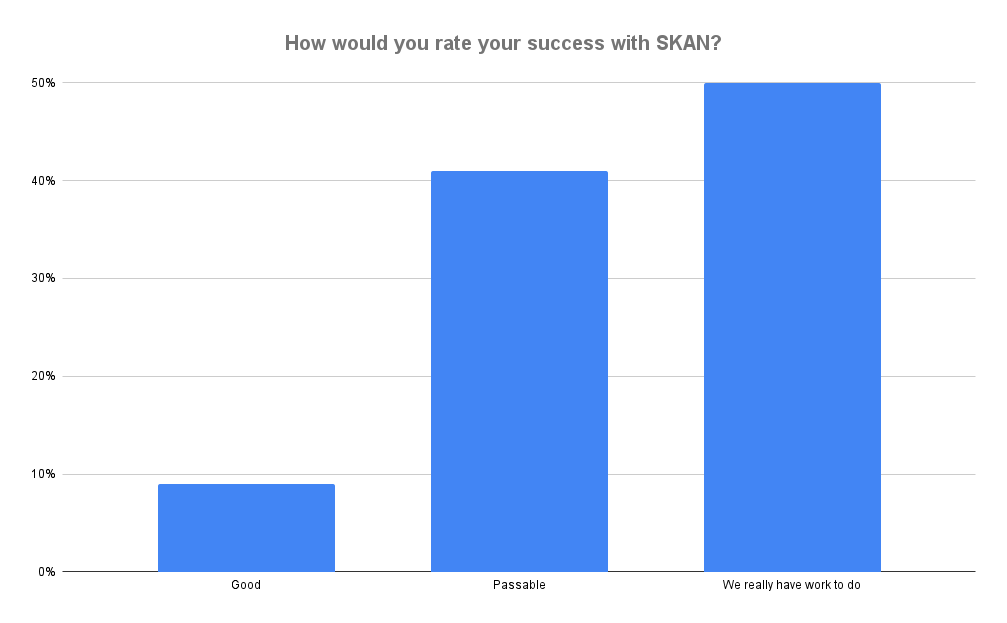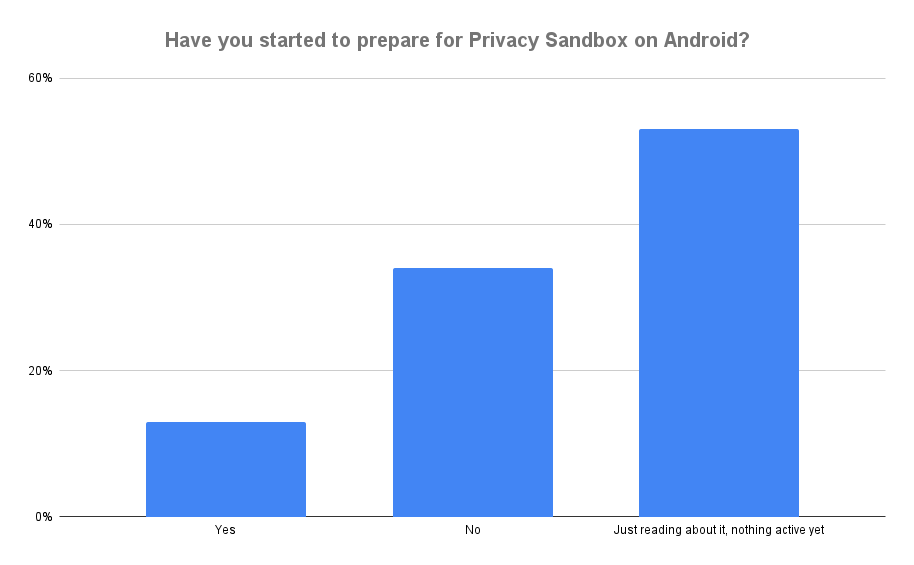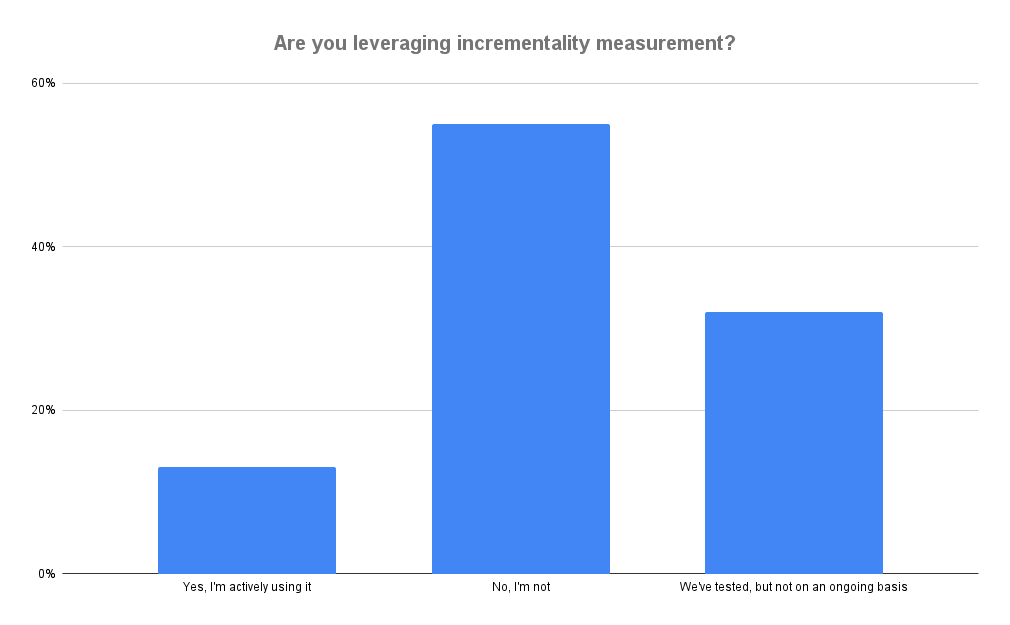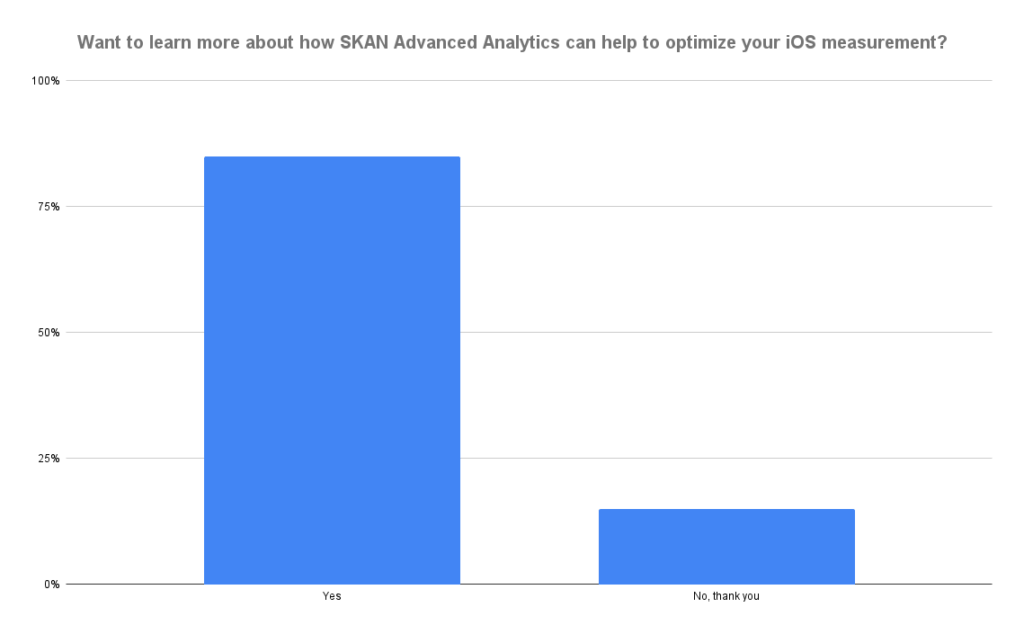Mobile marketers’ privacy progress: 4 datapoints on the future of marketing measurement
550 days ago, Apple changed mobile marketing measurement forever with the launch of iOS 14.5 and App Tracking Transparency. Four months ago, Google laid its proposal for the future of marketing measurement in front of the global app growth community: Privacy Sandbox for Android. So we’ve had a little time — particularly on the iOS and SKAdNetwork side — to prepare. The question is: how ready are marketers? How can we rate mobile marketers’ privacy progress?
We recently ask hundreds of marketers in a webinar questions on exactly that.
The results are not exactly pretty.
It’s not for lack of awareness: everyone knows that the future of marketing measurement looks very different than it did two years ago. IDFA is now scarce and GAID is literally going to be nonexistent. Third-party cookies are also going the way of the dodo, and non-device-identifier means of tracking like fingerprinting are increasingly either legally dubious — read GDPR, baby — or counter to platform guidelines, or rendered technologically impossible.
That means marketers of the future (like, literally tomorrow) need to become experts in privacy-safe attribution, or acquire that expertise, or partner with companies that manage it for them.
(Here’s a good place to start, by the way.)
In a recent webinar on the future of user acquisition, we asked participants to answer a series of polls of privacy-safe attribution technologies. Typically we get over a thousand registrants, about a quarter of whom participate live. In this case registration was higher, while around 250 mobile marketers watched live. (Caveat: this is not a random selection of growth pros: this is people who decided to participate in a webinar on these topics.)
So let’s see how people responded … and how we can currently rate mobile marketers’ privacy progress.
Success with Apple’s SKAdNetwork framework
We asked participants a simple question: How would you rate your success with SKAN?
Less than one in 10 said they could call it good, while 41% said it was passable. Which means, I guess, getting a C. Half of the participants said “we really have work to do.”

Yes, this is from a webinar that is specifically on SKAN and improving user acquisition measurement, so on the one hand it’s not too surprising. On the other hand, we’ve had App Tracking Transparency in place for well over a year now, and many are just realizing that they can’t skate by on fingerprinting or legacy optimization data.
Have you started to prepare for Google’s Privacy Sandbox for Android?
The results for the second poll were intriguing.
13% of mobile marketers in the webinar have already started to prepare for Privacy Sandbox on Android, suggesting that maybe the tough experience we’ve all gone through on the Apple side of the mobile ecosystem is having some benefit in terms of Android preparation.

On the other hand, 34% of mobile marketers are waiting and seeing. Most, however, are in the third bucket: reading about Privacy Sandbox and perhaps attending a webinar or two to gain some initial familiarity with the topic, the technologies, and any changes they’ll have to make.
Are you leveraging incrementality?
SKAN is a currently-available privacy-safe mode of mobile attribution and Privacy Sandbox is a future one, but a technology/technique that’s been available for a long time is incrementality. While incrementality requires some chops to work with and get right, it does offer a completely tracking-free and privacy-compliant mode of measurement.

Just over one in 10 is actually actively using incrementality right now, which suggests this is actually a fairly sophisticated sample of mobile marketers, while 32% are occasionally testing it, and 55% are in the nope category.
It may not be for the faint of heart and it does require some volume, some work, and sometimes a little bit of serendipity, but the number in the yes column is definitely going to go up in the coming years. Chat with Singular if you’re interested in knowing more about how to use all the marketing data we collect for you in incrementality analysis.
Want to learn more about how SKAN Advanced Analytics can help to optimize your iOS measurement?
Finally, we tooted our own horn just a little bit, asking people if they’d like to know more about SKAN Advanced Analytics. That’s Singular’s latest release of SKAdNetwork measurement technology, and beta testers have achieved a fairly stunning 87% D7 revenue prediction accuracy on average.

85%, staggeringly, said yes.
Again, caveats abound: they’re in a Singular webinar, which shows they’re open to Singular solutions. But still, an overwhelming majority are interested in ways to enhance the data they’re getting for iOS growth campaigns, and that’s interesting.
Where do you fit?
The most important point right now is this: where do you fit? If you put yourself on the mobile marketers’ privacy progress scale, where do you end up?
Are you getting the results you need from iOS right now? Are your mobile growth campaigns performing to expectations? While we’ll likely never recover the level of targeting and attribution that free-for-all IDFAs enabled, SKAN can work.
It’s not easy, and it does require some change, but it is possible.
Here’s how to find out what that solution might look like for you.
Stay up to date on the latest happenings in digital marketing


